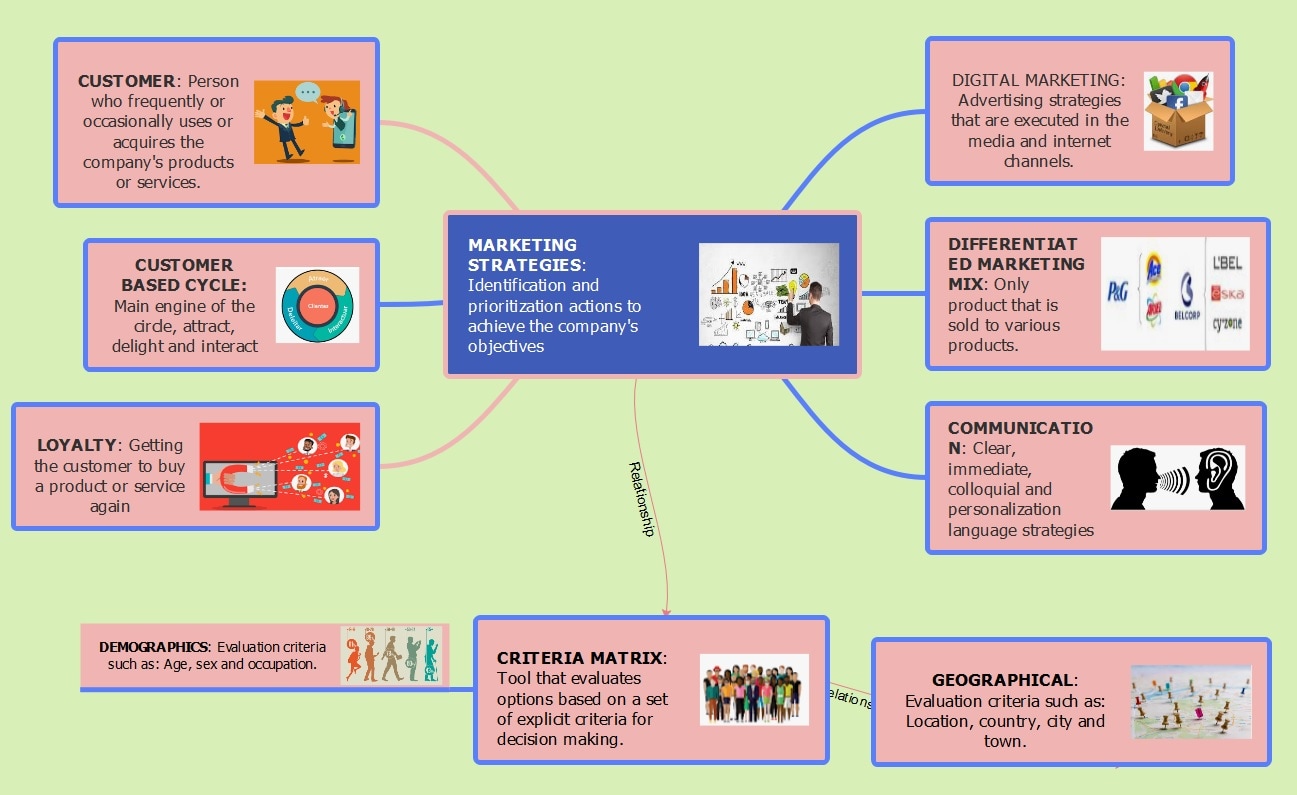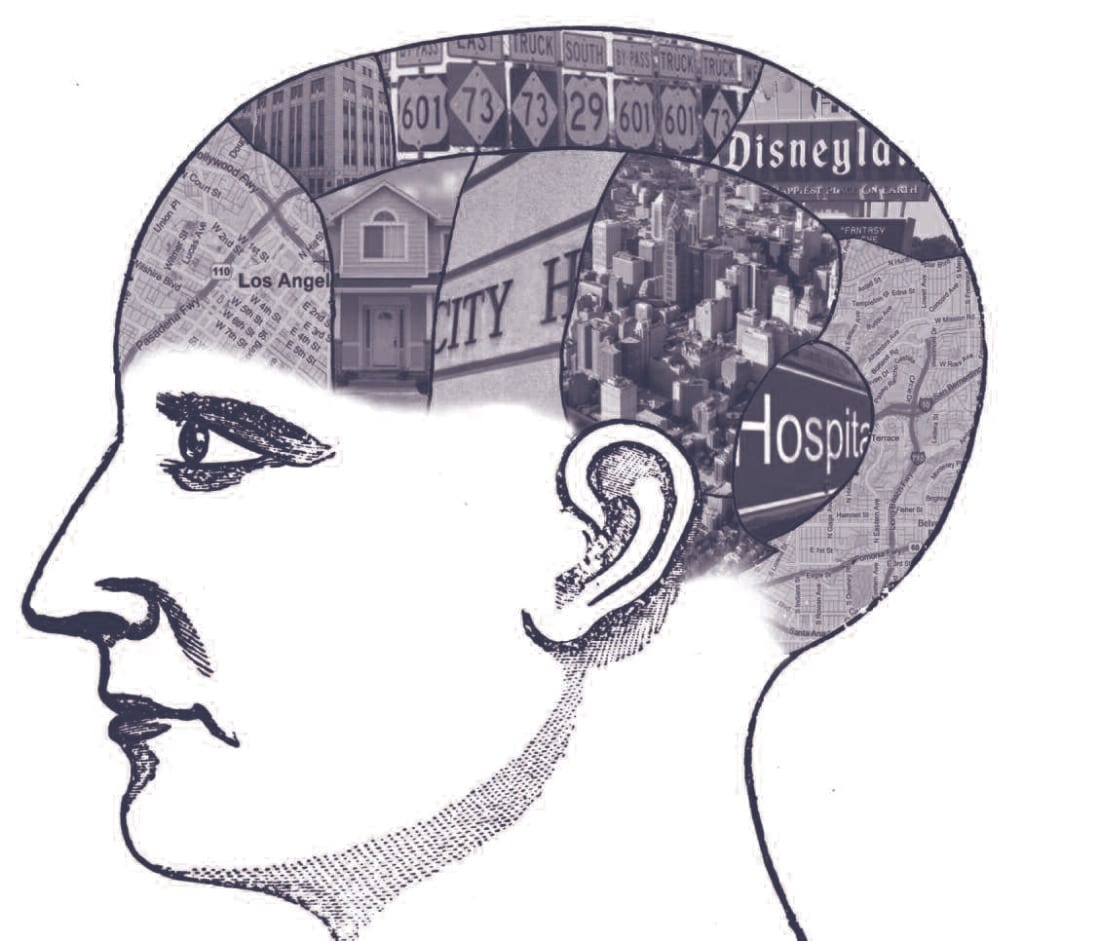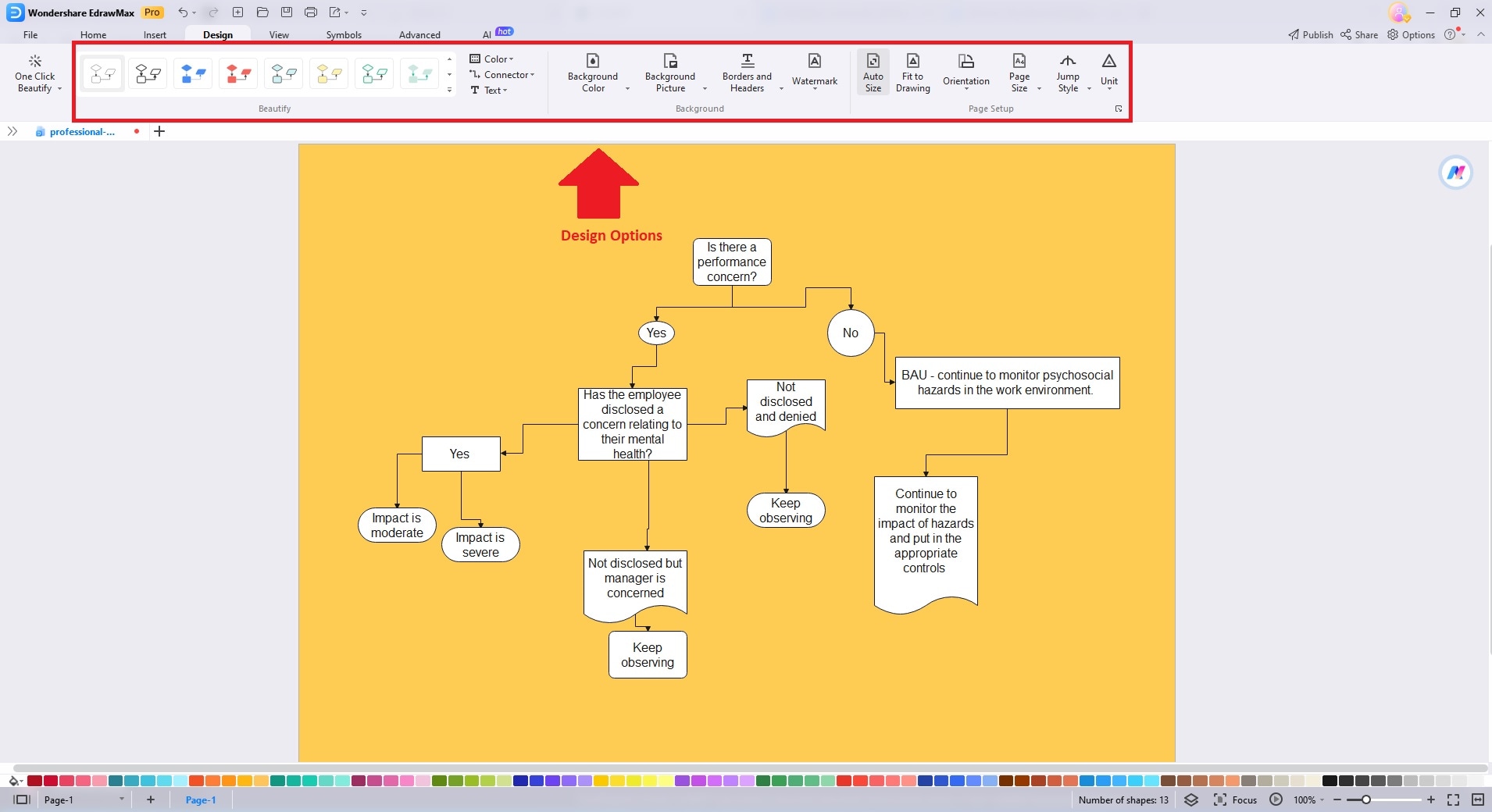
Mental maps, a psychological core concept, hold immense importance in daily life. These cognitive representations aid in memory, problem-solving, and creativity. A psychology concept map assists in navigating daily routines, from planning commutes to life goals. They provide a mental framework that guides decisions and adaptations.
The article explores the application of psychological mind maps. The page discusses its capacity to organize complex concepts within psychology. These diagrams help creatives understand intricate psychological theories and develop therapeutic approaches. Read the article below to learn more.
In this article
Part I: What Are Mental Maps?
A mental map is a cognitive representation of a person's spatial knowledge. It's an individual's internalized understanding of a particular place or environment. It is a mental model that enables people to navigate and make sense of the world around them.
Mental maps encompass not only physical geography but also abstract concepts and relationships. It serves as a tool for organizing, remembering, and interpreting information. These internal maps help individuals anticipate and plan actions. They are crucial for tasks ranging from daily navigation to complex problem-solving and decision-making.

Part II: Types of Mental Maps
There are various types of cognitive maps that individuals rely on. Below are three common types for mapping a person's psychology. These are:

- Personal Mental Maps. These are unique to each person. It represents your understanding of your immediate surroundings. Personal mental maps encompass your home, neighborhood, or workplace. Personal mental maps are highly subjective and shaped by personal experiences and interactions.
- Cultural and Societal Mental Maps. These mental maps reflect a particular culture or society's collective beliefs, values, and perceptions. They encompass notions about national identity, historical events, and shared symbols. Cultural and societal cognitive maps influence how groups perceive and relate to the world.
- Professional Mental Maps. Professionals in various fields, like healthcare, business, or academia, develop specialized mental maps to navigate their domains. These maps incorporate industry-specific knowledge, hierarchies, and practices. It aids experts in decision-making and problem-solving within their respective fields.
Part III: Benefits of Using Mental Maps
Using mental maps provides many benefits that extend to various aspects of life. These visual representations of information enhance cognitive processes. They enable you to organize thoughts, set goals, and streamline your daily activities. The advantages of using mental maps are:
Enhanced Clarity and Focus
Mental maps simplify complex information, making it more understandable and memorable. They help you see relationships between concepts. The visual nature of mental maps encourages a clearer thought process, reducing cognitive overload.
Improved Productivity
Mental maps aid in task prioritization, ensuring that important activities are addressed first. They help break down larger projects into smaller, manageable tasks. It reduces the feeling of being overwhelmed. You can work more efficiently by visualizing the steps required for a project or goal.
Effective Goal Setting
Mental maps facilitate the creation and tracking of goals. They provide a clear path toward desired outcomes. Visualizing long-term objectives in a cognitive map can boost motivation and commitment to achieving them. They allow for easy modification and adjustment of goals as circumstances change.
Time Efficiency
Mental maps streamline decision-making by presenting information in a structured format. They enable you to assess and weigh options, leading to faster choices quickly. When used for planning, mental maps save time by providing a visual overview of tasks and deadlines. They can aid in time management.
Part IV: How To Create a Mental Map
Creating a mental map is an excellent way to organize your thoughts and ideas visually, and Wondershare EdrawMax is a versatile tool for this purpose. Here are the steps to create a mental map using EdrawMax.
Step 1: Download and install EdrawMax on your computer.
Step 2: Open EdrawMax and start a new project. You can create a mental map from scratch or select a template from the Templates Community. Templates can provide a helpful starting point with pre-defined structures and elements.

Note: You can also open the EDDX files downloaded from this page in EdrawMax.
Step 3: Build your mental map by adding a central idea or topic in the center of the canvas. Create branches or subtopics connected to the central idea using lines from there. You can drag and drop shapes from the library. Label them and connect your diagram with lines or arrows.

Step 4: Enhance the visual appeal and clarity of your mental map. You can refine it by changing colors, fonts, line styles, and shapes. Customize the text and use different colors to distinguish categories or priorities. You can also adjust the layout to make the map more engaging and organized.

Step 5: Save your work to your computer or cloud storage once your mental map is complete. Export your diagram in various formats, such as image files (PNG, JPEG), PDF, or interactive HTML. You can also share it with others by exporting or sharing it through email or social media.

Part V: Example of Mental Maps
Explore real-world examples of mental maps across various fields. You can use cognitive maps for education, business, and personal development. Discover the versatility of mental mapping and how EdrawMax's templates can enhance your visualization skills.
Professional Mental Map
The mental map below offers a systematic approach to monitoring employee mental health. It begins by assessing performance concerns. It then proceeds to address psychosocial hazards if there are no issues. If performance concerns exist, it guides the user to check if the employee has disclosed mental health concerns. It provides appropriate action steps based on observations. The mental map is invaluable for HR professionals to ensure employee well-being.
Marketing Mental Map
This marketing mental map serves as a visual guide to achieving company goals. It covers critical aspects, including customer engagement and loyalty. The map also covers demographics, criteria, marketing mix, communication, digital marketing, and geography. The use of connectors and shapes enhances its clarity. A possible use case is for marketing teams to plan campaigns. It ensures a comprehensive approach to meeting organizational objectives.
Vicinity Mental Map
The vicinity mental map below displays a planned subdivision's relationship to neighboring landmarks. It also has corresponding community resources using measurements. The diagram assists in understanding a project's location. A vicinity mental map is essential for urban planning and real estate development. It can also aid in decision-making in land use and development projects.
Conclusion
Mental maps are powerful tools that benefit various aspects of our lives. They help improve cognitive clarity and productivity. They also aid in goal setting and time efficiency. They serve as assistants in both personal and professional contexts. Cognitive maps enhance our understanding and decision-making.
As technology continues to evolve, its impact on our mental maps cannot be overstated. Today, making a digital mind map digital tools are an essential asset. For those seeking a reliable mind map maker, EdrawMax offers a user-friendly platform. The platform enables effective visualization and organization of thoughts, ideas, and information.
FAQs
Explore some frequently asked questions regarding mental mapping. Learn about honing your skills to its influence on technology and notable figures.
- How Can I Improve My Mental Mapping Skills?
Improving your mental mapping skills involves practice and exploration. Regularly creating maps on various topics refines your abilities. Experiment with different map formats, and consider online resources or courses for guidance. Practicing will enhance your map-making and problem-solving skills.
- Are There Any Famous Individuals Known for Their Exceptional Mental Mapping Abilities?
Yes, several notable figures are known for their exceptional cognitive mapping abilities. Tony Buzan, a British author and educational consultant, popularized the concept of mind mapping. Historical figures like Leonardo da Vinci used intricate diagrams and notebooks as well. He also demonstrated remarkable mental mapping skills in their work.
- How Does Technology Affect Our Mental Maps?
Technology has a significant impact on our mental maps. Digital tools and platforms enable the creation, navigation, and sharing of digital mind maps. They influence how we organize and access information in an increasingly digital world. They shape our cognitive processes and information management strategies.





 below.
below. 

